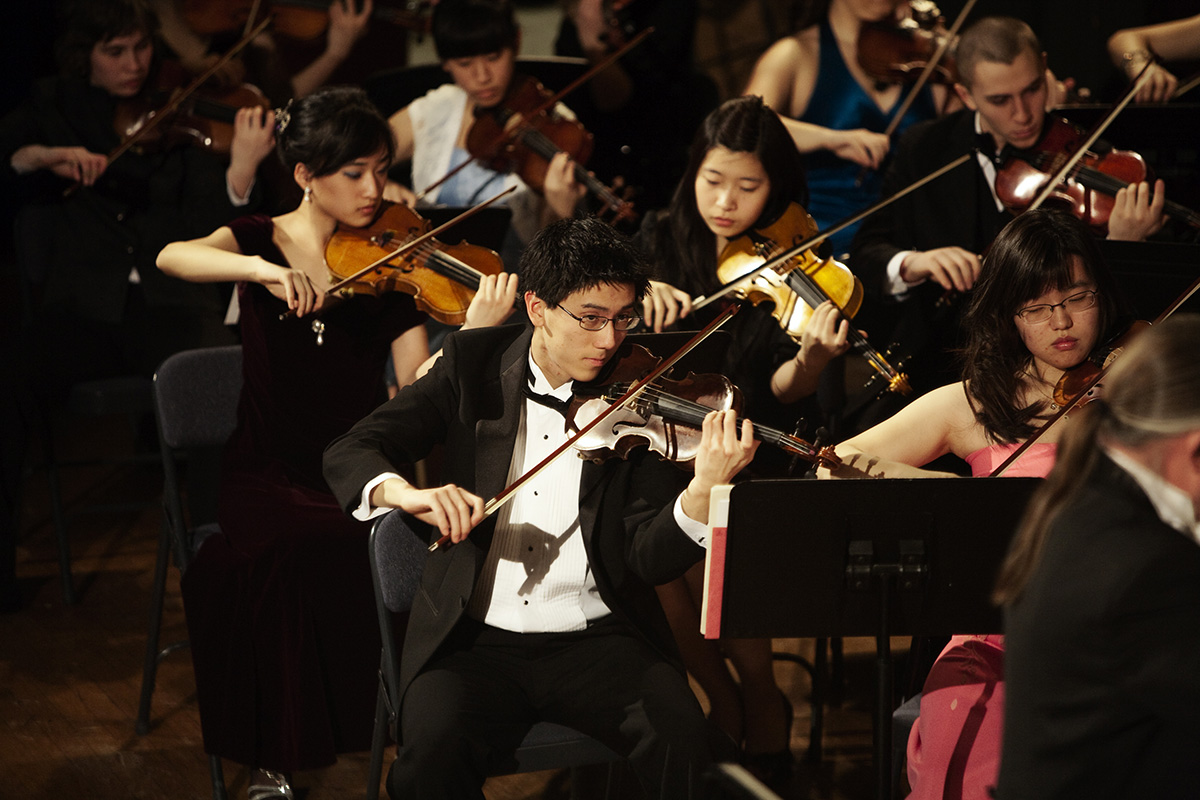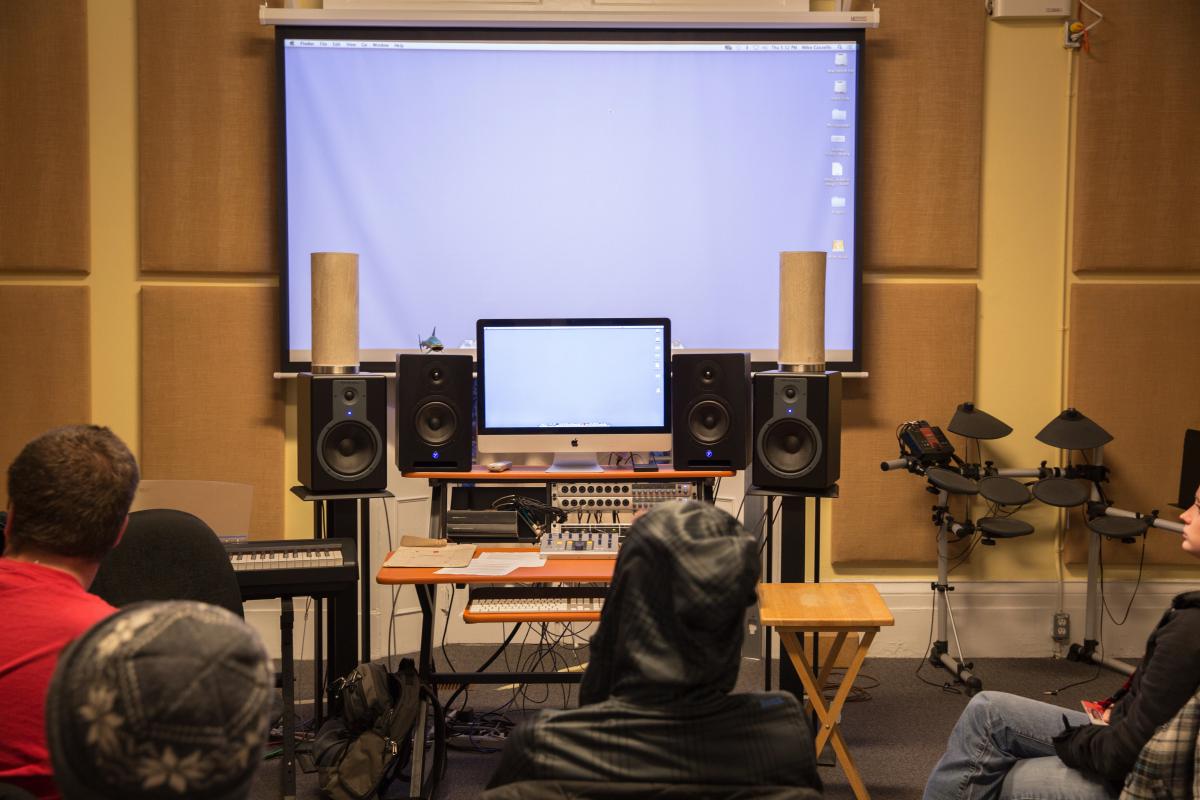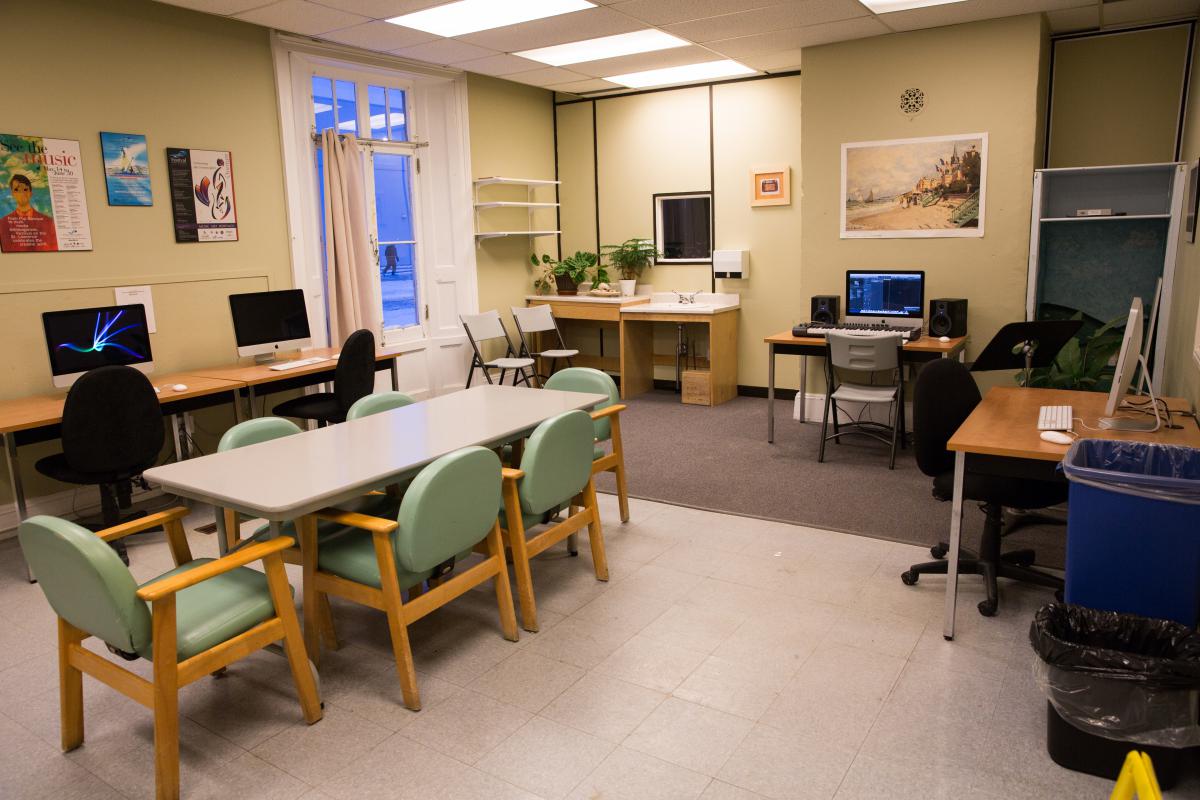New program will integrate music and digital technology
January 30, 2014
Share
A recently approved concurrent program hopes to arm students with a variety of interdisciplinary skills in music performance, music production and digital media when it begins in September 2014. The five-year Concurrent Bachelor of Music/Music and Digital Media program between the Queen’s School of Music and St. Lawrence College will graduate students with qualifications from both institutions.
Meredith Dault, Senior Communications Officer, sat down with Margaret Walker, Director of the School of Music, and Adrienne Shannon, coordinator of the Music and Digital Media program at St. Lawrence College, and an adjunct professor in the Queen’s School of Music, to find out more.
Meredith Dault: How will the concurrent program work?
 Queen's music students in performance.
Queen's music students in performance.Margaret Walker: What this program does is combine the academic and musical rigour of our BMus degree with the hands-on training and skills development of the diploma program in Music and Digital Media (MDM). Students will study music history, musicianship (or ear training), music theory and performance through the School of Music at Queen’s, but will also take one or two technical courses at St. Lawrence beginning right in their first year. Students in the program will graduate with a BMus degree from Queen’s after completing four years, and then the fifth year of the program will be entirely at St. Lawrence. To apply, students will have to satisfy the entrance requirements for Queen’s and the School of Music, as well as for St. Lawrence College.
MD: Where did the idea come from to bring these two programs together?
MW: It’s something we have been talking about for a number of years now, particularly because every year we get a few students who have completed the MDM program and then auditioned for the School of Music, and St. Lawrence students already participate in some of our performing ensembles through audition. Our idea was to find a way to make the programs talk to one another more deliberately. One of the things that will make this program unique in Canada will be the combination of state-of-the-art technological training with a classical music foundation.
MD: What is the history of the MDM program?
 Music and Digital Media program facilities at St. Lawrence College (Rai Allen Photography).
Music and Digital Media program facilities at St. Lawrence College (Rai Allen Photography). Adrienne Shannon: In the 1990s my piano duo, PALENAI, began adding visual projections to certain pieces we performed in concert. My collaborator, Joy Innis, is also a photographer with an art history background, so it was a natural fit. Our work was commissioned by organizations like Parks Canada, the Sierra Club of Western Canada, and the BC Provincial Museum and was nominated for a Telus Award for Innovation in the Arts. Based on what we’d learned, Joy and I proposed the MDM curriculum to St. Lawrence College in 2004. Traditional music courses such as theory, history, ear training and applied lessons are blended with new media courses. Students study digital film and photography, video editing, music recording and multimedia authoring, as well as communications. They gain the skills necessary to create music videos, to design their CD covers, to record themselves and create their own websites. We feel those are important skills for musicians in the 21st century.
MD: What are the greatest advantages of this kind of concurrent program?
MW: First, it will allow students to earn two qualifications in five years, rather than six (four years of university plus two years of college). Students graduating from this program will also be able to function very effectively in a number of different worlds, equipping them well for various careers. They will be comfortable in the “ivory tower” of western classical music, but also with using the very latest technology.
 Music and Digital Media program facilities at St. Lawrence College (Rai Allen Photography).
Music and Digital Media program facilities at St. Lawrence College (Rai Allen Photography).AS: The program will also encourage students to be entrepreneurial. Too often, a young pianist might want to record a first CD, but they can’t afford to hire technicians who are charging $400/hour. They need to get cover art designed. They need to create a website. This program will give them those skills so they can do some of that work themselves.
MW: While a good deal of the skills our students learn in the BMus program are transferable, it can still be hard to build a career as a performer. This program will allow them to develop skills that will enable them to work in the world of music in different ways. For example, a student could end up working in the world of popular music or in multimedia, but still come at things as an educated graduate able to communicate about music in a variety of ways to many different types of people. This program will allow students to develop the interdisciplinary skills they will need to thrive in the current climate. We’re really excited about the program and look forward to welcoming its first students in September.
For more information on the Concurrent Bachelor of Music/Music and Digital Music program, contact the School of Music, Queen’s University, 613-533-2066.
A program website for the concurrent program will be forthcoming.
Click here for more information on the Music and Digital Music program at St. Lawrence College.